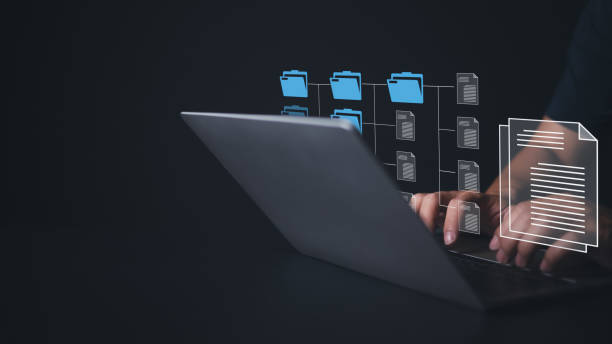Introduction to the Importance of On-Page SEO and its Role in Online Success
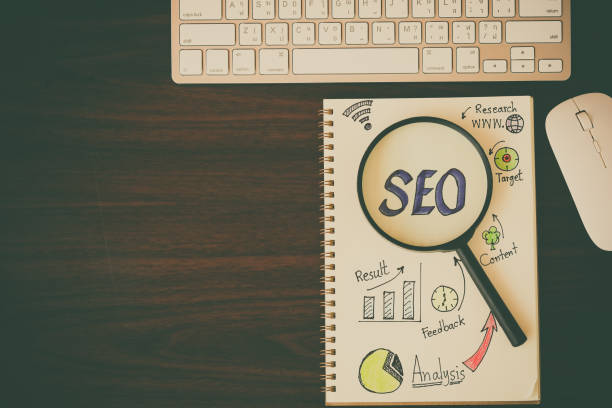
In today’s competitive internet world, simply having an online presence is not enough; visibility is vital.
This is where #On_Page_SEO or #Website_On-Page_Optimization plays a pivotal role.
Simply put, On-Page SEO refers to a set of actions taken within your website to improve its ranking in search engine results like Google.
These actions go beyond keywords and include improving site structure, content quality, loading speed, and user experience.
The main goal of this guide is to provide a explanatory and comprehensive overview of all aspects of On-Page SEO so that you can optimize your website to the best of your ability for search engines and users.
Why is On-Page SEO important? Without on-page optimization, even with the best content, your website might not be visible in search results.
Search engines rely on a webpage’s internal signals to understand its topic and quality.
Therefore, correctly applying On-Page SEO techniques is a fundamental step to attract #Organic_Traffic and increase #Ranking.
This educational article will accompany you on this journey to familiarize you with its key concepts and enable you to implement them in practice.
Understanding these foundational concepts is essential for anyone who wants to have a successful online presence, and without it, all other digital marketing efforts may not yield the desired results.
On-Page SEO is the backbone of your SEO strategy, and without a strong backbone, the entire structure will be weak.
Does your current corporate website not reflect your brand’s credibility and power as it should? Rasawb solves this challenge for you with professional corporate website design.
✅ Increase credibility and visitor trust
✅ Attract more targeted customers
⚡ Click for a free consultation!
Discovering Targeted Keywords for On-Page SEO
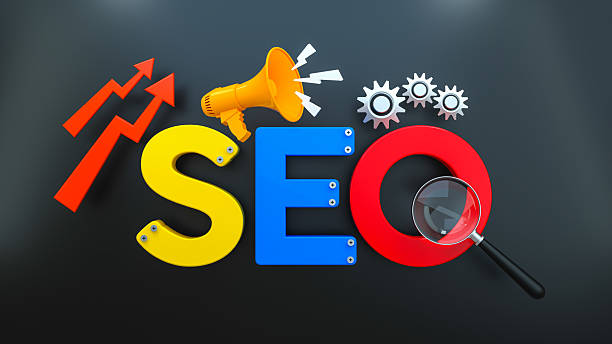
One of the first and most crucial steps in any On-Page SEO strategy is conducting comprehensive keyword research.
Keywords are not only a bridge between your content and what users are searching for, but they will also be your primary guide for producing inquisitive content and relevant content.
This stage requires a precise analytical approach to identify words and phrases that not only have a decent search volume but also whose user intent aligns with your services or products.
For this purpose, various tools such as Google Keyword Planner, Ahrefs, Semrush, and Moz Keyword Explorer can help you discover relevant keywords, check their monthly search volume, and assess the level of competition.
Don’t forget that in addition to main and short-tail keywords, you should also look for long-tail keywords.
These longer, more specific phrases usually have less competition and result in higher conversion rates, as they indicate a more specific purchase intent or need from the user.
For example, instead of “SEO,” use “on-page SEO tutorial for beginners.”
This is a key guideline.
Also, analyzing your competitors’ keywords can give you valuable insights and reveal their strengths and weaknesses.
This specialized approach to keyword selection is the primary basis for effective page optimization and improving your website’s position in search results.
Strong On-Page SEO begins with proper keyword selection and influences all subsequent optimization steps.
Optimizing Internal Web Page Elements

After identifying target keywords, it’s time to implement them into the core elements of web pages.
This stage forms the core of On-Page SEO and involves optimizing sections that search engines look at to understand page content.
This is a specialized and very important part.
The most important elements include the following:
| Element | Description and Importance in On-Page SEO | Key Tips |
|---|---|---|
| Title Tag | The most important signal for search engines indicating the page’s topic. Displayed in search results. |
Includes the main keyword at the beginning, attractive, and less than 60 characters. |
| Meta Description | A short summary of page content that encourages users to click. (Does not directly impact ranking but affects click-through rate.) |
Attractive and contains the keyword, less than 160 characters. |
| Headings (H1, H2, H3…) | Structures content and improves readability. H1 is the main page title and should only be used once. |
H1 should contain the main keyword. Other headings should include secondary and related keywords. |
| URL Structure | Clean and readable URLs make it easy for users and search engines to understand the page’s topic. | Short, contains keyword, no extra characters. |
| Keyword Density and Variation | Natural and logical use of main keywords and their synonyms in the text. | Avoid excessive repetition (keyword stuffing). Use LSI keywords. |
Effective On-Page SEO requires attention to the details of these elements.
The page title should be engaging and contain your main keyword.
The meta description should be a strong call to action for the user to click on your link.
Proper use of headings (H1 to H6) not only helps search engines understand your content structure but also improves readability for users.
Additionally, your URL structure should be short, descriptive, and include the main keyword.
Optimizing these elements ultimately leads to improved website visibility in search results and an increased click-through rate (CTR).
This educational approach to optimizing internal elements is the foundation of successful On-Page SEO.
Producing Valuable and SEO-Optimized Content
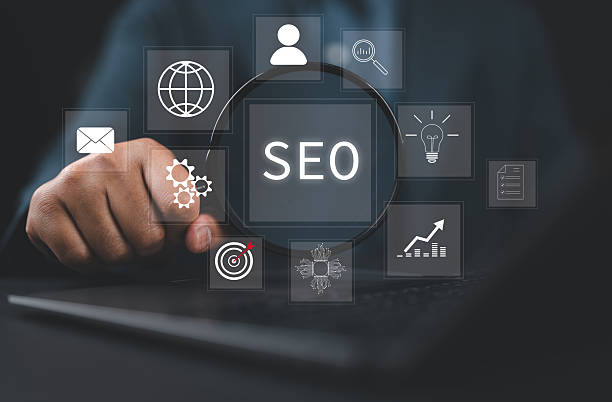
Content is king; this phrase holds special significance in the world of SEO, particularly for On-Page SEO.
After preparing the initial page elements, it’s time to produce content that is both valuable to users and optimized for search engines.
Your content must be comprehensive, accurate, unique, and address user needs.
This includes blog posts, product pages, service descriptions, and any text present on your website.
For your content to be SEO-optimized, you must naturally integrate your target keywords into the text, rather than forcefully stuffing them into every sentence.
This is what is called specialized content.
Overuse of keywords (keyword stuffing) not only degrades the user experience but can also lead to penalties from search engines.
When creating content, pay special attention to its readability.
Use short paragraphs, simple sentences, lists, and images to break up the text and enhance visual appeal.
Entertaining content or inquisitive content can engage users more and increase their dwell time on the site, which itself is a positive signal for search engines.
Furthermore, regularly updating content with news and new information indicates your site’s activity and dynamism and can help improve your ranking.
This part of On-Page SEO is the heart of your strategy because search engines are increasingly focusing on content quality and relevance to user intent.
High-quality content naturally attracts backlinks and encourages social sharing, which indirectly helps your On-Page SEO.
Don’t have a corporate website yet and are missing out on online opportunities? With professional corporate website design by Rasawb,
✅ Double your business’s credibility
✅ Attract new customers
⚡ Free consultation for your corporate website now!
Importance of Image Optimization for On-Page SEO

Images play an important role in the visual appeal of a website and improving user experience, but if not properly optimized, they can significantly slow down page loading speed and harm your On-Page SEO.
Image optimization is a key component of On-Page SEO strategy that is often overlooked.
The first step is to use appropriate image formats.
Formats like WebP or JPEG 2000 can significantly reduce file size while maintaining image quality.
If these formats are not supported, JPEG for photos and PNG for images with transparency or graphics are the best options.
Image file size is also very important.
Large images can slow down page loading, which negatively impacts SEO ranking and user experience.
Use online image compression tools or WordPress plugins to reduce file size without significant quality loss.
Image file names should also be descriptive and contain relevant keywords.
Instead of “IMG001.jpg,” use “on-page-seo-optimization.jpg.”
Most importantly, there’s the alternative text (Alt Text).
Alt Text is a brief and accurate description of the image content that is read if the image fails to load or for users with visual impairments.
Alt Text is an excellent opportunity to include relevant keywords and help search engines understand the image’s topic, thereby improving the overall On-Page SEO of the page.
This is a very important guideline in image optimization.
Image optimization can also drive traffic from Google Image Search to your website, which is a valuable source for attracting visitors.
This component of On-Page SEO not only helps your site speed but also improves your website’s accessibility and overall visibility.
Powerful Internal Linking Structure
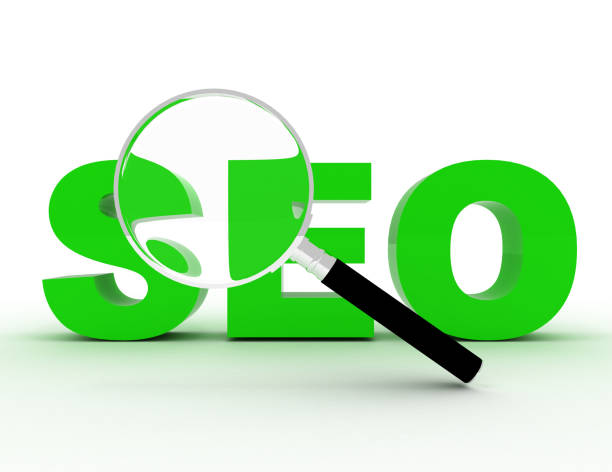
Internal Linking is one of the most powerful yet simplest tools in the On-Page SEO toolbox that is often overlooked.
Internal links are links that connect one page within a website to another page within the same website.
Their importance lies in three key aspects:
Firstly, they help search engines understand your website’s structure and crawl and index all its pages.
Secondly, internal links pass authority and credibility (link equity) throughout your website.
If a high-authority page links to other pages, this authority is passed to those pages, helping to improve their ranking.
Thirdly, internal linking improves user experience (UX).
By providing relevant and useful links within the text, users can easily find more information on your website, which leads to increased dwell time and reduced bounce rate.
When creating internal links, use descriptive and keyword-rich anchor text.
For example, instead of “click here,” use “comprehensive On-Page SEO guide.”
Also, link more to your important and pillar pages to signal their importance to search engines.
Another important guideline is to naturally and logically integrate internal links into your content, not forcefully.
This not only helps search engines but also improves user experience.
A specialized and well-thought-out internal linking strategy can significantly increase your website’s visibility and authority in search results and is an integral part of successful On-Page SEO.
Technical Aspects of On-Page SEO and Improving User Experience
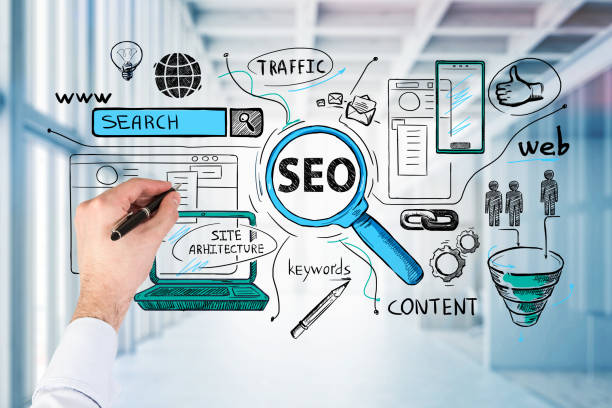
In addition to content and linking structure, the technical aspects of On-Page SEO also play a crucial role in ranking and user experience.
These elements, often managed by web developers, directly impact your website’s crawlability, indexability, and display in search engines.
Here are some of the most important ones:
| Technical Aspect | Description and Importance in On-Page SEO | Optimization Tips |
|---|---|---|
| Page Speed | Important ranking factor and crucial for user experience. Users abandon slow websites. |
Compress images, use caching, optimize code (CSS, JS), use CDN. |
| Mobile-Friendliness | Most searches are done via mobile. Google primarily indexes the mobile version of the site (Mobile-first indexing). |
Responsive design, appropriately spaced clickable elements, readable font size. |
| HTTPS Protocol (SSL Certificate) | Ranking factor and essential for security and user trust. | Install SSL certificate and ensure correct HTTP to HTTPS redirect. |
| XML Sitemap | A map for search engines that shows them all important pages on the site. | Create and update regularly, then submit to Google Search Console. |
| Robots.txt File | Tells search engines which sections to crawl and which not to. | Ensure important pages are not blocked. |
These specialized and analytical aspects are the cornerstone of strong On-Page SEO.
Site speed is not only important for search engines but directly impacts user experience.
A website that loads quickly has a lower bounce rate, and users will be more inclined to stay on it.
Given the increasing use of mobile for searching, mobile compatibility is also essential.
Google primarily considers the mobile version of your site for indexing (mobile-first indexing).
Installing an SSL certificate (HTTPS) not only enhances site security but is also a direct ranking factor for Google.
XML sitemaps and Robots.txt files help search engines crawl your site more effectively.
Optimizing these aspects is a very valuable guideline for any website administrator and is considered essential for modern On-Page SEO.
The Role of User Experience (UX) in On-Page SEO

In recent years, the relationship between user experience (UX) and On-Page SEO has become increasingly intertwined.
Search engines, especially Google, are increasingly relying on user experience signals to determine website rankings.
This means that a site with excellent UX not only keeps users satisfied but also indirectly helps improve its SEO ranking.
UX signals that Google pays attention to include Bounce Rate, Dwell Time, Click-Through Rate (CTR), and Core Web Vitals (such as loading speed, interactivity, and visual stability).
To improve user experience and consequently On-Page SEO, you should pay attention to the following factors:
- Easy Navigation: The site structure should be clear and intuitive so that users can easily find what they are looking for.
Clear menus, efficient search, and breadcrumbs help with this. - Content Readability: Using readable fonts, appropriate text size, sufficient white space, and breaking up text with headings and images makes content more pleasant for users to read.
- Responsive Design: As mentioned earlier, your site should display well on all devices (desktop, tablet, mobile).
- Interactivity: Ensure that buttons and links are clickable and respond quickly.
Contact forms should be simple and user-friendly. - Site Speed: One of the most important UX factors that directly affects the bounce rate.
Improving it is a critical guideline for On-Page SEO.
Providing an entertaining and seamless user experience encourages users to spend more time on your site and increases their likelihood of returning.
This analytical approach and user focus will ultimately help improve your search engine ranking and the sustained success of your On-Page SEO.
Does your current website adequately showcase your brand’s credibility? Or does it drive potential customers away?
Rasawb, with years of experience in professional corporate website design, is your comprehensive solution.
✅ A modern, beautiful website that matches your brand identity
✅ Significant increase in lead and new customer acquisition
⚡ Contact Rasawb now for a free corporate website design consultation!
Monitoring and Analyzing On-Page SEO Performance

After implementing On-Page SEO strategies, your work is not over.
Continuous monitoring and analysis of website performance to identify strengths, weaknesses, and opportunities for improvement is an integral part of a successful SEO strategy.
Without data, you are operating in the dark and cannot measure the impact of your actions.
Two vital tools for this purpose are Google Analytics and Google Search Console.
Google Analytics provides valuable analytical information about user behavior on your website, including the number of visitors, most visited pages, dwell time on the site, bounce rate, traffic sources, and conversions.
By analyzing this data, you can understand which content is more popular, where users enter your site, and where they leave it.
This information helps you make more informed decisions to improve On-Page SEO and user experience.
Google Search Console (GSC) is a tool that directly interacts with the Google search engine and provides more specialized data on how Google interacts with your site.
This includes keyword impressions where your site appears, average ranking, click-through rate, crawl errors, indexing issues, and mobile-friendliness status.
GSC helps you identify and fix technical issues affecting On-Page SEO.
For example, if a page is not indexed or has a 404 error, GSC will give you news about it.
Regular monitoring of these tools, along with attention to Google algorithm news, allows you to continuously optimize your On-Page SEO strategy.
This is an educational and iterative approach that helps you stay ahead of the competition and leverage your website’s full potential.
Analyzing this data allows you to answer inquisitive content about your site’s performance and take necessary actions.
A Look at the Future and Advanced On-Page SEO Techniques
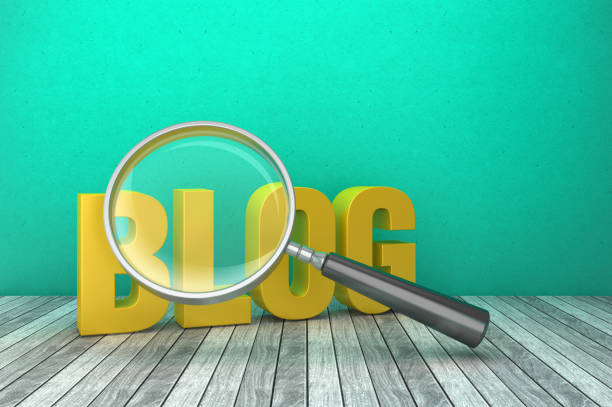
The world of SEO is constantly changing and evolving, and On-Page SEO is no exception.
To stay competitive and ensure your website is optimized for the future, you need to look at advanced techniques and future trends in On-Page SEO.
This educational section will help you prepare for future changes.
One of the most important recent and future trends is the increased emphasis on Core Web Vitals.
These performance metrics, introduced by Google, include LCP (Largest Contentful Paint), FID (First Input Delay), and CLS (Cumulative Layout Shift) and directly impact user experience and ranking.
Optimizing these factors is a specialized step for On-Page SEO.
Artificial intelligence and machine learning are also playing an increasing role in SEO.
Algorithms like RankBrain, BERT, and MUM help Google better understand user intent and provide more relevant content.
This means your content should be optimized not only for keywords but also for answering complex user questions and providing an excellent user experience.
Voice Search SEO is also a growing trend.
With the increasing use of voice assistants, optimizing content for voice searches, which are typically longer and more conversational, becomes important.
This part of On-Page SEO requires understanding how users speak to voice assistants.
Structured Data or Schema Markup is also a powerful tool to help search engines deeply understand your content.
By adding these codes, you can help Google display specific information such as reviews, events, recipes, and products in a richer format (Rich Snippets) in search results.
This not only increases your visibility but also improves the click-through rate.
Optimizing for entertaining content and engaging content that keeps users engaged for longer is also an advanced On-Page SEO strategy.
By staying updated with these trends and keeping your knowledge current, you can leverage the future of On-Page SEO to your advantage.
Frequently Asked Questions
| Number | Question | Answer |
|---|---|---|
| 1 | What is On-Page SEO? | On-Page SEO refers to a set of actions taken within the website and for optimizing its pages to achieve a better ranking in search results. |
| 2 | What is the most important factor in On-Page SEO? | High-quality, relevant, and comprehensive content that meets user needs is the most important factor in On-Page SEO. |
| 3 | What role does the Title Tag play in On-Page SEO? | The title tag is one of the most important factors that tells search engines and users what the page content is about. It should include the main keyword and be engaging. |
| 4 | How important is the Meta Description tag? | Although it does not directly affect ranking, it is very effective on the click-through rate (CTR) in search results and encourages users to visit the page. |
| 5 | How is image optimization done in On-Page SEO? | By using appropriate alt tags, compressing image file size for faster loading, and meaningful naming of image files. |
| 6 | What is the importance of using Headings (H1, H2, H3) in On-Page SEO? | Headings help structure content, increase readability, and assist search engines in understanding the hierarchy and sub-topics of the content. |
| 7 | What is Internal Linking and what are its benefits? | Internal linking means creating links between different pages of a website. This helps distribute authority, improve user navigation, and assist search engine crawling. |
| 8 | Where should the Focus Keyword be placed on the page? | The main keyword should be placed in the title tag, meta description, H1, first paragraph, and naturally throughout the text, and if possible, in the URL. |
| 9 | What effect does duplicate content have on On-Page SEO? | Duplicate content can harm site ranking and confuse search engines as to which version is original, potentially leading to it being classified as spam. |
| 10 | How important is page loading speed in On-Page SEO? | Page loading speed is an important ranking factor and directly affects user experience. Slow pages increase user bounce rates. |
And other services of Rasa Web Advertising Agency in the field of advertising
Smart Marketing Automation: Professional optimization to increase click-through rates using attractive UI design.
Smart Advertorials: An effective tool for campaign management with the help of SEO-focused content strategy.
Smart Advertising Campaign: A novel service to increase customer acquisition through marketing automation.
Smart Marketplace: An effective tool to improve SEO ranking by optimizing key pages.
Smart Marketing Automation: Professional optimization for customer acquisition using attractive UI design.
And over hundreds of other services in the field of internet advertising, advertising consultation, and organizational solutions
Internet Advertising | Advertising Strategy | Advertorials
Sources
Websima’s Comprehensive Guide to On-Page SEOAlireza Mahroui’s On-Page SEO ChecklistMizbanfa’s Advanced On-Page SEO TechniquesComprehensive Guide to On-Page SEO in Digital Marketing
?With Rasawb Afarin, have a powerful presence in the digital world! From professional corporate website design to SEO optimization and social media management, we are your comprehensive digital marketing solution.
📍 Tehran, Mirdamad Street, next to Bank Markazi, Kazerun Jonubi Alley, Ramin Alley, No. 6

